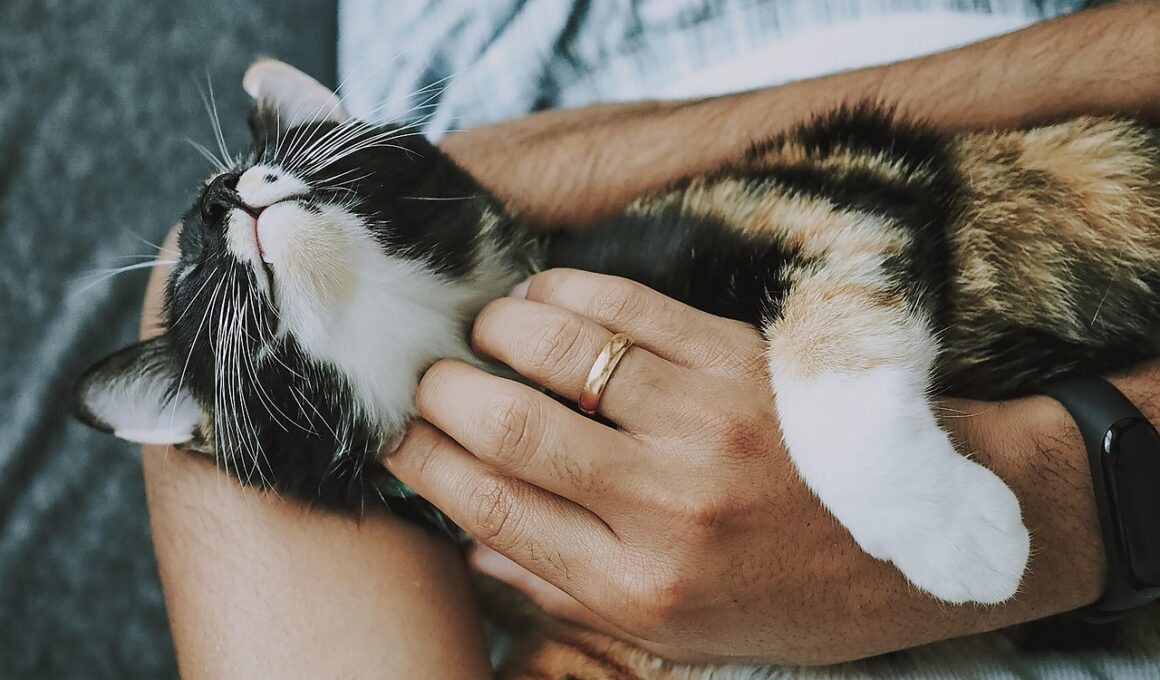Dealing with Shedding: Tips to Manage Your Cat’s Fur
Shedding is a natural part of a cat’s life, but it can be quite a challenge for cat owners. Understanding why cats shed is the key to managing this process effectively. Factors such as seasonal changes, health, and breed play significant roles in how much your cat will shed throughout the year. Regular grooming is essential, as it helps reduce loose fur in your home while promoting a healthy coat. Cats have different grooming needs based on their coat type; long-haired breeds often require more frequent grooming sessions compared to short-haired cats. A good brush can make all the difference. If you notice excessive shedding or bald spots, consult your veterinarian to rule out underlying health issues. It’s also essential to maintain a balanced diet tailored to your feline’s specific needs; proper nutrition contributes to a healthy fur condition. Some homeowners may find investing in quality cat furniture and designated sleeping areas beneficial, as it helps manage fur spread more efficiently. Keep your environment clean with regular vacuuming and lint rolling to maintain a fur-free home.
Regular brushing is an essential part of managing cat shedding. Besides reducing loose hair, it also distributes natural oils throughout their fur, which helps improve coat shine. Setting a consistent grooming schedule can help make it a bonding experience for you and your pet. For long-haired cats, you may want to brush them daily, while short-haired breeds might only require a good brushing once a week. Investing in the right grooming tools is essential; consider using a high-quality deshedding tool or rubber grooming gloves for added effectiveness. These tools effectively remove loose fur while being gentle on your cat’s skin. Understanding your cat’s comfort level during grooming sessions is crucial. Pay attention to their body language and adjust your approach accordingly. If your cat starts to squirm or become agitated, take a break. You could also use treats as incentives during grooming to help encourage cooperation. A stress-free grooming process can lead to better results and make it easier for you to manage your cat’s shedding. Additionally, positive reinforcement helps create a more pleasant experience for both you and your feline friend.
Bathing cats may not always be necessary, but there are instances when it can assist in managing shedding. Cats are typically known for their self-grooming habits, so most of them do not easily take to baths. However, for those with allergies or excessive shedding problems, a gentle cat-specific shampoo could be beneficial. It helps remove excess fur as well as any dirt or debris trapped within the coat. Make sure to use lukewarm water and be gentle to avoid stressing your cat. Always follow up with a good brushing to help eliminate even more loose hair post-bath. Regular use of baths could be considered, but consult your veterinarian regarding the best practices for your specific breed. Never use human shampoo, as it may be too harsh for your cat’s skin. Keep the bathing experience as calm and enjoyable as possible, which will also lessen your cat’s anxiety. You could even try introducing them to the water gradually before full baths, as this helps create a more relaxed atmosphere for future grooming sessions.
Adjusting the Diet for Optimal Fur Health
Nutrition plays a critical role in managing your cat’s shedding and overall health. A well-balanced diet rich in essential fatty acids, vitamins, and minerals contributes to a healthy coat. Look for high-quality cat food that lists real meat as the primary ingredient. Ingredients such as omega-3 and omega-6 fatty acids help maintain skin’s health and improve the condition of fur, reducing excessive shedding. Some commercial cat foods are specially formulated to promote healthy skin and coat, and they can make a significant difference over time. Regular veterinary check-ups can help in monitoring your cat’s health and ensure they are getting the right nutrients. Your vet may also recommend supplements if needed. Offering fresh water is equally important; dehydration can lead to dry skin, which may exacerbate shedding issues. Significantly, if you switch your cat’s diet, do so gradually to avoid digestive upset. Monitor your cat’s coat condition and overall health continuously to adapt their diet further. You’ll soon notice the changes in their health and fur, making management of shedding easier.
Maintaining a clean environment is vital for managing shedding effectively. Investing in a good vacuum cleaner designed for pet hair can significantly ease the process. Additionally, consider using washable coverlets for furniture where your cat likes to lounge. This will make cleaning fur from surfaces more manageable. Regular cleaning routines should include vacuuming carpets and upholstery, as hair often accumulates in these areas. Lint rollers can be your best friend for quick clean-ups and removing fur from your clothes or other surfaces. When selecting furniture, opting for materials that repel pet hair can also help. Always keep an eye on your cat’s favorite locations, such as windowsills or specific corners of the home; these areas can require frequent cleaning due to excessive shedding. Creating designated spaces can also assist with managing fur spread effectively. Furthermore, using air purifiers with HEPA filters can help reduce allergens and dander in the home. This comprehensive approach to maintaining cleanliness will limit feline fur spread, making cat ownership more enjoyable.
Finding Cat-Friendly Tools and Accessories
Consider investing in cat-friendly tools and accessories that specifically address shedding issues. Deshedding tools or grooming gloves are fantastic options for effectively reducing loose fur. Additionally, using a high-quality self-cleaning lint roller can simplify fur removal. Make sure to choose tools that are gentle and suitable for your cat’s fur length to avoid causing discomfort. While shopping, look for products that emphasize ease of use and effectiveness. Reading reviews can help you choose suitable options based on the experiences of other cat owners. Also, pay close attention to your cat’s preferences; they may not enjoy every grooming tool, so experimentation is necessary. Offering various brushes during grooming sessions may help you discover what your cat enjoys. Accessories like cat trees or scratching posts designed with fur-catching features can assist in managing shedding. It’s often worth investing in dual-purpose products that expand your cat’s environment while also being functional for fur management. Finding the right mix of tools will significantly contribute to an overall cleaner home and happier pet.
In conclusion, successfully managing your cat’s shedding requires a comprehensive approach that combines regular grooming, proper nutrition, and a clean living environment. By understanding the natural shedding process and observing your cat’s specific needs, you can create a routine tailored to them. Always be alert to signs of stress during grooming or potential health issues that may contribute to shedding. Make it a positive experience by incorporating treats, gentle brushing, and plenty of soothing words. Keep in mind that shedding is a normal part of life with a cat; therefore, embracing and managing it effectively leads to a harmonious home. Regular vet consultations are important to ensure your cat remains healthy. Continuously adapt your strategies as needed; every cat is different. Over time, you will develop a system that works well for you and your feline friend. Remember that this journey involves patience and understanding, ultimately enriching the bond you share with your cat. Enjoy the moments spent together, making the grooming process an essential part of your shared lives.


